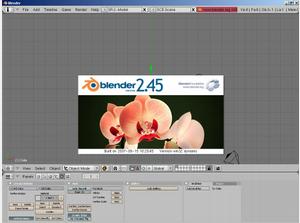/user/dologin/?next=/p/Q3EKkjh6PY/
AnonymousUser
[{"fields": {"is_featured": false, "dir_size": 3908, "igdata": "the interface menu system mouse movements blender is a freely-distributed lightweight 3d modeling suite designed to work under many different operating systems including windows and linux. when you open blender, by default you will see a screen similar to this. for the sake of this ignitable, we will call this the default view.
the blender user interface is designed around panels. these panels allow for vast amounts of customization as well as great amounts of power and complexity. 

a note on terminology: often times panels are referred to as "windows" and "areas". i will attempt to stay consistent with the word "panels" but there are times when the user interface calls them one of the other two. panels are not fixed within the main blender window, to resize them, you can drag them down. often times there is more than meets the eye hidden in these panels. panels can also be split to allow for even more available options, or a better working environment. for instance some people may like to work in a four viewed 3d window (reminiscent of 3d studio max or maya).
to split a window, right click on one of its bounds... select "split area"... and then select a place to split the window at. this can be done any number of times to achieve whatever environment suites you. to rejoin areas, the process is very similar. right-click on a seam between two panels... and select "join areas". an arrow will appear to indicate the direction of the join. in this case, the left panel will be expanded to fill the space allocated by the right panel. in the 3d panel you can change the view orientation by selecting the "view" menu... and selecting the preferred view back to the default window. the top panel (the "user preferences" panel) has some very helpful menus that should be covered briefly. the "file" menu has many of the options you would expect in the file menu of any other application, it also has some important blender specific options. the "add" menu allows you to add objects to your project. this includes objects like 3d meshes, surfaces, and lighting options. the "timeline" menu allows you to manipulate a timeline. this comes into play when you are working with animations. the "render" menu allows you to render your projects. if you are brave enough to select "render animation" but don't wish to wait through a long rendering process use the escape button to cancel. the "help" menu is another typical menu you would find on any other application. here you can get information about the software as well as find help on getting started. the online documentation is very helpful and abundant. this icon on the very left hand side changes the "window type" of the panel (here, we've heard panels called windows and areas). go ahead and open this. there are many different types of panels with many different types of options. the three simple object transformations (translate, rotate, and scale) are done using mouse movements. though this is a very unorthodox approach to 3d modeling, it will quickly become second nature. to initiate these movements you must click and hold on the 3d window. drawing a straight line will cause your movements to translate the selected object or objects along the active 3d window's plane. as you can see, the movement of the mouse translated the default cube along the x/y planes (note: the 3d position of object is located at the lower left hand corner of the 3d window). drawing in an upward motion, then in a downward motion (the reverse works just as well) allows you to scale the selected object. note that the amount of scale applied is relative to the distance the mouse ends up from the origin of the object. a swooping motion will allow you to rotate the object. this rotation is constrained to the z axis. also note that these three transformations can be constrained to the grid by holding the ctrl button while transforming (not while making the movement).

these operations take some time to get used to, but when you get the hang of it they will be second nature. <br/>", "overdue_email_after": false, "fail_retake": false, "keywords": "3D Modeling, Blender", "fail_action": "", "notification_email": false, "access_token_redemption_count": 0, "completion_type": "", "title": "Introduction to Blender", "overdue_email_after_text": null, "encoded_id": "Q3EKkjh6PY", "is_viewed": true, "overdue_days_email": false, "parent_id": null, "private_views": 0, "fail_email_text": null, "status": "active", "sharing": "public", "description": "This Ignitable will cover the blender user interface, basic customization, and the most basic transformations of 3D objects.", "tags": [56, 57], "price": "0.00", "invite_message": null, "allow_score_reset": true, "igtype": "ignitable", "pass_email_text": null, "fail_popup_text": null, "podcast": false, "public_views": 4703, "notification_email_text": null, "categories": [12, 13, 18], "overdue_days_email_text": null, "pass_action": "", "notification_days_before": null, "access_token": null, "pass_popup_text": null, "pass_level": 0, "author": 17, "completion_date": null, "overdue_summary": false, "fail_retake_auto": false, "avgrating": "0.0", "directory": "40_1194066377274", "date_created": "2007-11-03T00:00:00Z", "access_token_limit": 0}, "model": "Content.ignitable", "pk": 40}]
None

